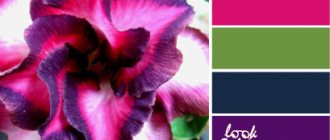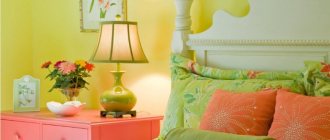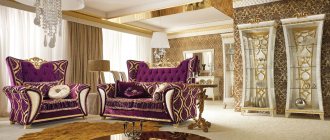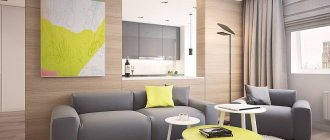Features of color and its shades
In nature, brown is obtained as a result of the solidification of liquids of yellow shades. Because of this, it is sometimes called dark yellow. The similarity to mixed colors, such as bronze, chestnut and coffee, is explained by the large number of different pigments in their composition. In fashion, brown has always been contrasted with bright, rich tones, and therefore has received a reputation for being “grown-up and respectable.” This color scheme also includes many shades. They got their names due to the prevalence of brown in nature and everyday life. These include wheat, brown, rust, copper, dark beige, brown, chocolate, as well as khaki, sepia and the color of withered leaves. Some tones have a peculiar tint. Dark burgundy is also considered a shade of brown, but this does not apply to burgundy in general, which in principle is not mixed, but is close directly to red.
What are the names of brown shades that ready-made gouache has?
Specialized art stores often sell prepared materials. They contain natural dyes and may be suitable for you. After all, it is not always possible to obtain one color or another by mixing; it happens that completely faded colors come out. Ready-made shades of brown have names such as: natural umber (natural) or burnt (dark brown with a green tint), as well as dark mars brown; natural and burnt sienna; ocher, including golden.
Pros and cons of mixing it yourself
It is recommended to buy ready-made brown paint if you are not confident in the quality of mixing it yourself. When using acrylic paints in particular, there may be problems with application to clothing or canvas - they will look different there. This is influenced by some components and features of raw materials from a particular manufacturer. If you need to paint a lot of walls, there are two options - buying ready-made paint or making it to order. It is not possible to make two mixtures of absolutely identical shades on your own - you need special equipment. In a simpler situation, experimentation should not be avoided. You can fully realize your ideas about shades. There will be some negative aspects in this process. Since the entire volume of paint is calculated initially, “misses” are possible. In addition, tinting takes a lot of effort. The problem will also be the synthesis of rich tones. Well, the main disadvantage can be considered the high tendency to fade, characteristic of such solutions.
However, there are many advantages:
- saving;
- wide selection of paints for cooking;
- creating unique shades and adjusting them;
- mixing near the work site.
Tips and tricks
Artists advise buying ready-made brown if you have doubts about the quality of mixing paints with your own hands. For example, when working with acrylic, problems may arise when applied to canvas or clothing - the color on the canvas will look different depending on the manufacturer and the specific components in the composition.
It is also better to carry out tinting in a store if you have to paint a large volume of walls in the house - it is almost impossible to get a second portion of exactly the same paint without special equipment. In other situations, don’t be afraid to experiment and create new colors yourself - this will allow you to express your imagination to the fullest!
Rules for mixing tones
There are several systems and models that determine the interaction and similarity of colors. The science of various aspects of the compatibility of shades and their use in art is called coloristics. One of its foundations is the color wheel, including intermediate colors. To synthesize different tones, 3 basic colors are used: red, yellow and blue. A special role is also given to achromatic colors - black and white. Mixing rules are built around these features. You need to mix watercolor, acrylic, gouache, oil, water-based and construction paints on a white palette - this is how the resulting shade is clearly visible. Instead, you can also use a white earthenware plate, and sometimes even plastic dishes, white cardboard or thick paper. There are 4 basic rules for color mixing:
- There are achromatic tones (white, gray, black) and colored (all others). In the second category, they differ in saturation, depth, brightness, lightness and hue.
- Mixing can be done mechanically (by stirring) and optically (by placing strokes on top of each other).
- When merging 2 of the main tones, you will get intermediate ones between them on the color wheel.
- When you mix 2 opposite colors on a circle, you get a composite that is unlike them.
What colors make brown?
Proper mixing is a whole science, but today the task is made easier by a ready-made color wheel, which can be seen on the Internet. It gives an understanding that the main colors are yellow, red and blue. The circle represents the result when each of these options is mixed with each other - secondary colors. If you combine them, you get tertiary ones. There are three main laws when mixing:
- Law No. 1. Each color of the circle is a symbiosis of those opposite to the center, which, when mixed, give an additional color, that is, achromatic. Complementaries are clearly defined, for example, red has green, and yellow has blue.
- Law No. 2. Used in practice, it indicates that when mixing paints that are close to each other on the color wheel, new colors of the main color are formed - the one that is located between the mixed pigments. So, to get orange, you should combine red with yellow, and green - mix yellow with blue. By combining the three main components in the form of red, yellow and blue in ambiguous proportions, you can achieve any effect.
- Law No. 3. When mixing the same shades, similar mixtures are obtained. This result is achieved by combining colors that are identical in tone, but different in saturation. Another option: mix several colors through a symbiosis of chromatic and achromatic.
- Top useful vitamins for the elderly
- 3D printed food for seniors
- How to plant strawberries in August
Basic colors to get brown
Brown is made by mixing several pigments. Experienced specialists can perfectly calculate the required proportions of the three primary colors. However, in practice it is more convenient to mix 2 colors at a time, and gradually. Classic combinations for synthesizing a brown tone are combinations of red and green, orange and blue, and violet and yellow. In each case, one paint is used as a base, and the other gradually forms the desired classic shade of brown. So, you need to add red to green, blue to orange, and yellow to purple. The amount of pigment added usually needs to be much less. Other proportions of fusion will give different, dissimilar shades of brown and other composite colors. Brown can also be obtained by mixing in small quantities all the colors of the rainbow. Important! You can improve the color using special dyes.
Green with red
This is one of the combinations for creating dirty tones. If you don’t have green on hand, you will have to use the three primary colors, mixing blue and yellow to the desired tone. This combination, among other things, allows you to select different shades of green. This, in turn, will add options to the final result from mixing red with green. What to add to what is decided individually. However, it would be more correct to pour red paint into a container with green, exactly until the shade and brightness become as desired. Whatever the proportion turns out to be in the end, the resulting shades will come out warm. It is worth experimenting with the ingredients: choose green in a dirty shade, for example, camouflage, or light, light green, and similarly in the case of red. Generally, the darker the red and green paints, the better.
Orange with blue
In this case, if necessary, the entire three basic tones are also used: if you need to make orange yourself, then red and yellow are mixed. The first should then account for 9/10, and the second, respectively, 1/10. This ratio can be varied, but a dark shade is required. The color of the solution can be made “intermediate” between orange and red. Blue is added to this mixture or to the finished orange paint. The required volume is selected individually, but in the range from 5 to 10 units. by 90-95 units. orange component, depending on the desired lightness and the original appearance of both ingredients. If the blue composition is used in the recommended amount, then it remains possible to adjust the brightness of the mixture or add cyanosis. You can look at the final color only after the film has dried. One way or another, it will come out lighter than the original version. It won't hurt to do preliminary tests on some surface.
Purple with yellow
Another way to get brown is to mix yellow with purple. In the absence of the second, a mixture of blue and red is made. Purple leans more toward blue, so more blue paint is needed to create a “true” color. Violet and red are adjacent on the spectral circle, but are at opposite ends of the visible spectrum. With equal proportions or a preponderance towards red, the result will be purple. It is also suitable for subsequent mixing with yellow. The latter, one way or another, is used to add darker pigment. Yellowness must be added gradually so as not to make the mixture too light. The composition will need to be constantly stirred, otherwise you may miss the moment when yellow is no longer needed. Next you will need to do a shade test on a hard surface. Decisions are then made based on the color of the surface layer.
The resulting paint is suitable for use on both mineral and metal surfaces.
What colors should be mixed to get brown?
Artists who work with gouache know that when different paints are combined, new colors are born. Even a special synthesis table has been created that helps make the necessary shades. The most basic way to get brown is to add red to green. These tones are available in any hardware store or in the office supply department. However, you cannot mix dark red and dark green, because you will get a dirty shade that will vaguely resemble black.
Don't know how to get a brown color when mixing paints if there is no green in the palette? In this case, you can use three colors: red, blue, yellow. This is due to the fact that green is obtained through the synthesis of blue and yellow. Another mixing option will use gray paint plus orange, or purple and yellow. Thus, the missing pigments that make up the basic formula can always be replaced.
- Raspberry cake - step-by-step recipes for making chocolate, biscuit, curd or shortbread
- Zucchini casserole with tomatoes and cheese in the oven - step-by-step recipes with photos
- Chair covers
Methods for obtaining shades of brown
To obtain warm shades, add yellow or red to brown paint. You should not pour large portions at once; gradual stirring is necessary. Light and warm shades of brown allow you to paint elements such as reflected light, earth, brick and wood surfaces. If the tone is too warm, the balance can be restored with blue paint. You should initially add only a blue tone to create a dark and calm shade. The color can be varied with white and colored paints. To obtain dark brown shades you will need black pigment. No more than a few percent of the total volume of the mixture should be added. An excess of black color is very difficult to compensate for, unless by increasing the mass of brown several times, and this is not always acceptable. Adding too much white or water to eliminate blackness will only make the mixture worse.
Table of mixing colors and their proportions to obtain brown color
The most popular shades (one common option for each is presented):
| Hue | Colors to mix | Proportions | ||
| Light brown | Green | Red | White | 100:5:5, 100:10:5 |
| Brown | Blue | Red | Yellow | 100:100:10 |
| Dark brown | Violet | Yellow | Black | 90:10:5 |
| Coffee color | Orange | Blue | Black | 100:50:10 |
| Chocolate | Dark green (herbal) | Orange | Red | 100:50:40 |
Thanks to this table, you can accurately calculate the ratios without the risk of making mistakes. Usually, 3 primary colors are enough to make a mixture of the desired shade only from them, or to synthesize orange/violet/green for subsequent mixing with red, blue or yellow. In some cases, black or white paints are indispensable. The brightness of the original tones is of great importance. If you choose the wrong ingredients, you won’t always be able to correct the color. It is necessary to add black in minimal portions, because this color is the most difficult to “overpower.” With the right skill, you can choose the components yourself and get the same classic or special rare shades. The brown base for subsequent adjustment is even synthesized from a combination of yellow, turquoise and pink/purple colors, which are secondary or completely absent in the spectrum.
Basic information about brown color
The brown shade is obtained from the main base colors. It consists of red, yellow, blue. This color, along with green, is the most common and often found around us. Trees, earth, fallen leaves are associated with this tone. Brown symbolizes fertility, stability and prosperity. But each color, in addition to its positive side, also has negative features. The brown tone is associated with dictatorship and totalitarianism. Everyone remembers that the Nazis of Hitler’s Germany dressed in this color.
But, despite this, the tone is universal and practical in everyday life due to its non-staining nature. It is worn with both cool shades and warm colors. In a home interior, this is an excellent choice for the kitchen or living room. It will give them coziness and psychological comfort. It will go well with cool gray and white. It also looks great with yellow and gold shades.











